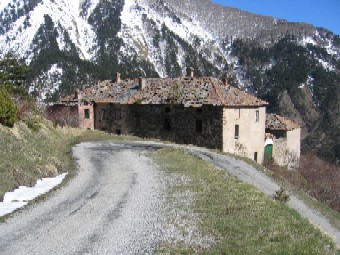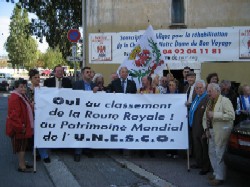Just like the Ca, the Chapel Notre Dame de Bon Voyage is part of the memory of the County of Nice. It was the last place where travelers would gather before embarking on their perilous journey to Turin, the capital of the States of Savoy, of which the County of Nice was part. The princes of Savoy and the governors of Nice would often gather there. Built in 1727 in its current form, it marked the last limit of the territory of Nice, where the powers of the consuls of Nice ended. It symbolized the beginning of the Royal Road connecting Nice to Turin. Its name is explained by the fact that it represented the start of the journey.
And the journey for the rehabilitation of the entire Niçoise culture by the F.A.C.N has only just begun. It started in 1996 and achieved its first major victory in 1999 with the creation of the first department of Regional Languages and Cultures at the University of Nice Sophia Antipolis and in 2000 with the recognition by the Ministry of Culture of Nissart as a Regional Language of France. Jean-Marc Giaume, a few weeks ago, in his office, and as often, started surfing the web merely out of curiosity and a desire to enrich his culture.

He stumbled somewhat by chance upon the site of UNESCO World Heritage Sites. He talks about that moment with emotion: “I found my Grail for the County of Nice.” He read the criteria one by one. He could hardly believe it: the Royal Road, which Thomas Jefferson, future president of the United States of America, in 1787 described as “the most remarkable work of ancient and modern times”, corresponds to six classification criteria. (https://whc.unesco.org/fr/criteres/ ) He also noticed that no site is classified in the extreme southeast of France. He organized a meeting to present “his grail” to all the associations that make up the F.A.C.N, which approved and will accompany this project assisted by researchers, historians, conservators, archaeologists, and scholars of the County.
The aim is to give our County an international stature by having the Royal Road recognized, built in 1610, and which symbolized for three centuries and 230 kilometers the homogeneity of a territory with Turin as its capital and Nice as its port. “It will generate jobs, tourism. Obviously, it is an important economic, cultural, tourist, and human stake,” specifies Jean-Marc Giaume, extremely motivated by this new fight, the most important. It will allow for perpetuating for eternity the richness of the Niçard cultural heritage.



